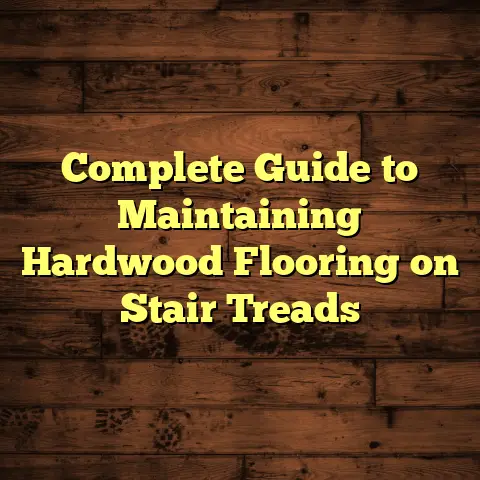Installation Process for Wire Brushed Engineered Hardwood Flooring
To install wire-brushed engineered hardwood flooring, start by cleaning the subfloor and confirming it's even. Test for moisture and choose noise-reducing underlayment. You can float the planks without adhesive using spacers for expansion gaps. If you prefer a secure bond, apply adhesive for a glue-down method ideal for moisture-prone areas. Alternatively, nail the planks for stability or staple them at angles for a professional finish. Following these steps guarantees a durable and visually pleasing result.
Subfloor Preparation
Before beginning the installation process for wire brushed engineered hardwood flooring, make sure your subfloor is well-prepared. This critical step sets the stage for a successful flooring project. Start by thoroughly cleaning the subfloor to remove any dirt or debris.
Address any uneven areas or imperfections to create a smooth and level surface for the engineered hardwood flooring. Checking the moisture levels in the subfloor is vital to prevent any future issues with the flooring. Follow the manufacturer's guidelines meticulously to guarantee a proper subfloor preparation.
Underlayment Installation
Verify your subfloor is ready, as underlayment installation plays a key role in providing moisture protection and sound reduction for your wire brushed engineered hardwood flooring.
When installing underlayment, opt for materials like foam or cork known for their noise-reducing properties. These materials not only help with sound reduction but also act as a cushioned barrier, potentially extending the lifespan of your flooring.
Proper installation of underlayment is essential for thermal insulation, ensuring your floor remains comfortable throughout the year. Before laying down your wire brushed planks, make sure the underlayment is smooth, clean, and free of any debris.
Floating Floor Method
When installing wire brushed engineered hardwood flooring using the floating floor method, interlock the planks without the need for glue or nails. This method involves laying the planks over the subfloor, allowing them to float over the surface.
By interlocking the planks, a secure and stable floor is created. Remember to use spacers to maintain proper expansion gaps around the edges of the room, accommodating the natural movement of the wood.
The floating floor method is a great choice for DIY installations, offering ease of installation and the flexibility to replace individual planks if necessary. It's important to adhere to the manufacturer's guidelines for acclimating the flooring, preparing the subfloor correctly, and following the recommended installation techniques.
Glue-Down Method
To securely install wire brushed engineered hardwood flooring, consider utilizing the glue-down method for a strong and permanent bond between the planks and the subfloor.
The glue-down method involves applying adhesive to the subfloor before securing the wire brushed engineered hardwood planks in place. This creates a durable and long-lasting flooring solution, especially suitable for areas where moisture resistance is essential, like bathrooms or kitchens.
Make sure to choose an adhesive that's compatible with both the subfloor and the engineered hardwood flooring to guarantee a successful installation.
By following the proper steps and using the right materials, you can achieve a flooring surface that not only looks fantastic but also stands the test of time.
The glue-down method provides a secure foundation for your wire brushed engineered hardwood flooring, offering stability and resilience for years to come.
Nail-Down Method
For a safe and sturdy installation of wire brushed engineered hardwood flooring, consider employing the nail-down method using a nail gun to fasten the planks to the subfloor.
When nail-down installing wire brushed engineered hardwood, make sure the tongue of the planks faces towards the center of the room for a proper fit.
Pre-drilling holes before securing the planks helps prevent splitting and guarantees a solid installation.
Remember to allow the newly installed wire brushed engineered hardwood floor to acclimate for 24 hours before subjecting it to heavy traffic or placing furniture on top.
This method offers a durable and stable installation for your wire brushed engineered hardwood flooring, ensuring longevity and strength.
Staple-Down Method
Consider selecting the staple-down method when installing wire brushed engineered hardwood flooring as it involves using staples to secure the planks to the subfloor. Staples are driven at a 45-degree angle above the tongue of the engineered hardwood planks, providing a strong and secure attachment.
This method is ideal for engineered hardwood floors with a plywood or HDF core. Proper spacing and positioning of staples are essential to guarantee a smooth and seamless appearance of the flooring once installed.
By carefully following the staple-down technique, you can achieve a professional finish that enhances the overall look of your space. Remember that the key to success lies in the precision of staple placement and ensuring that each plank is securely fastened to the subfloor.
Tools and Materials
When installing wire brushed engineered hardwood flooring, having necessary tools and materials at hand is essential for a successful installation process. Tools required for this project include a rubber mallet for gently tapping the planks into place, a tape measure to guarantee precise cuts, safety glasses for eye protection, and a tapping block to prevent damage to the flooring during installation.
Materials needed typically consist of wire brushed engineered hardwood planks, adhesive if necessary, finishing nails to secure the planks, and transition strips for a polished look. The wire brushed finish on the engineered hardwood adds texture and durability to the flooring, showcasing the natural grain patterns for an aesthetically pleasing result.
This type of flooring is favored for its rustic appearance and forgiving surface, making it an excellent choice for areas with high foot traffic or homes with pets and children. By utilizing the appropriate tools and materials, you can ensure a smooth and successful installation of wire brushed engineered hardwood flooring.
Additional Tips
To enhance the longevity and appearance of your wire brushed engineered hardwood flooring, prioritize regular maintenance and proper care techniques. For high-traffic areas, consider using wire brushed engineered hardwood as it's more forgiving of wear.
Remember to sweep or vacuum regularly to remove debris and occasionally damp mop with a hardwood floor cleaner to keep your floors looking their best. Avoid harsh chemicals, excessive water, or steam cleaners as they can damage the finish. Protect your flooring from scratches and dents by using furniture pads.
When selecting a floor cleaner, make sure it's suitable for engineered hardwood to maintain its moisture-resistant properties. Floating engineered hardwood is a popular installation method for wire brushed flooring, providing stability and flexibility.
Conclusion
To sum up, installing wire brushed engineered hardwood flooring involves:
- Subfloor preparation
- Underlayment installation
- Choosing from different methods like floating, glue-down, nail-down, or staple-down.
Make sure you have the right tools and materials on hand for a successful installation process.
Follow these steps carefully to achieve a beautiful and durable flooring finish in your home.
With proper preparation and attention to detail, you can enjoy the timeless appeal of wire brushed hardwood for years to come.





